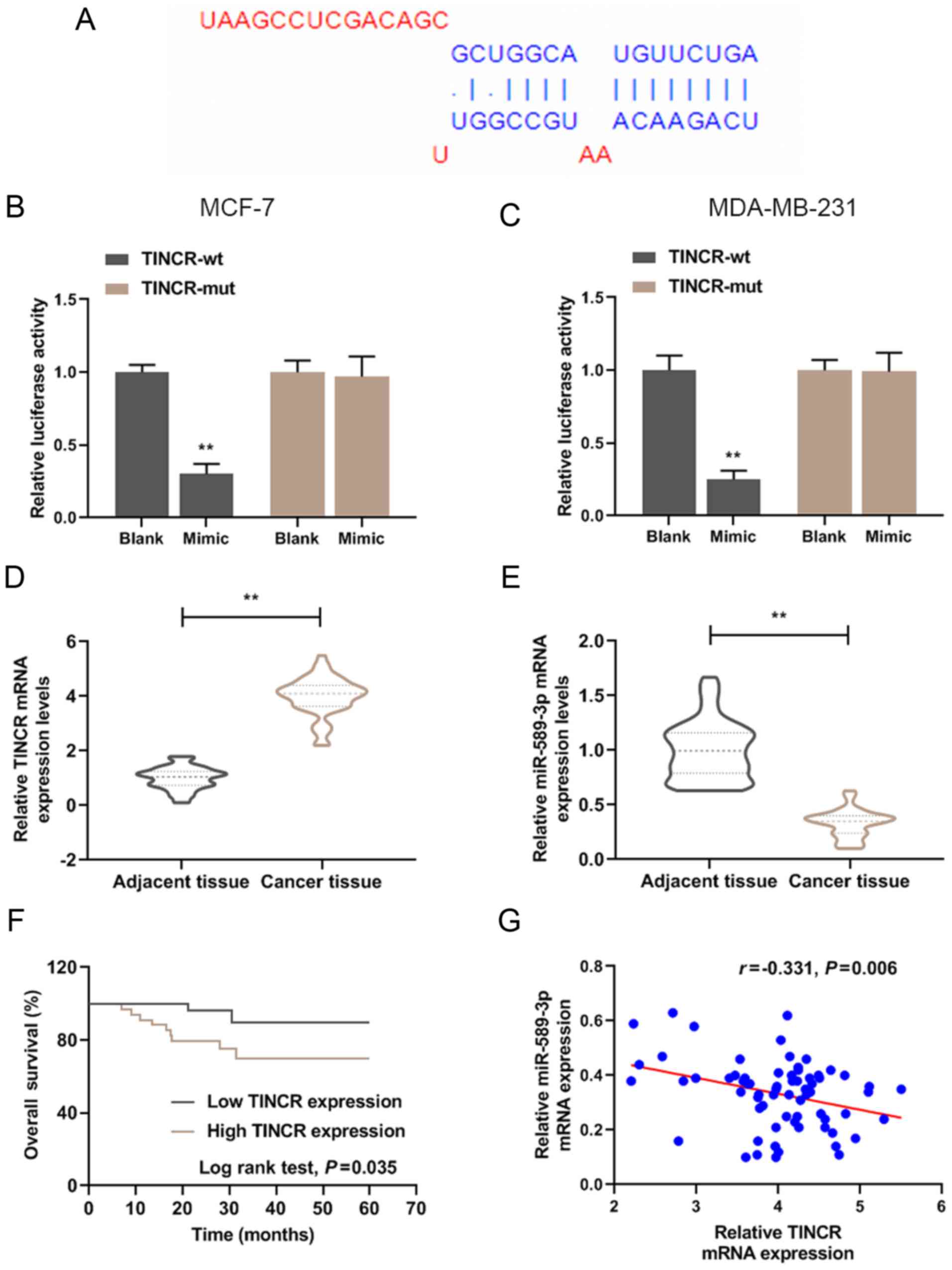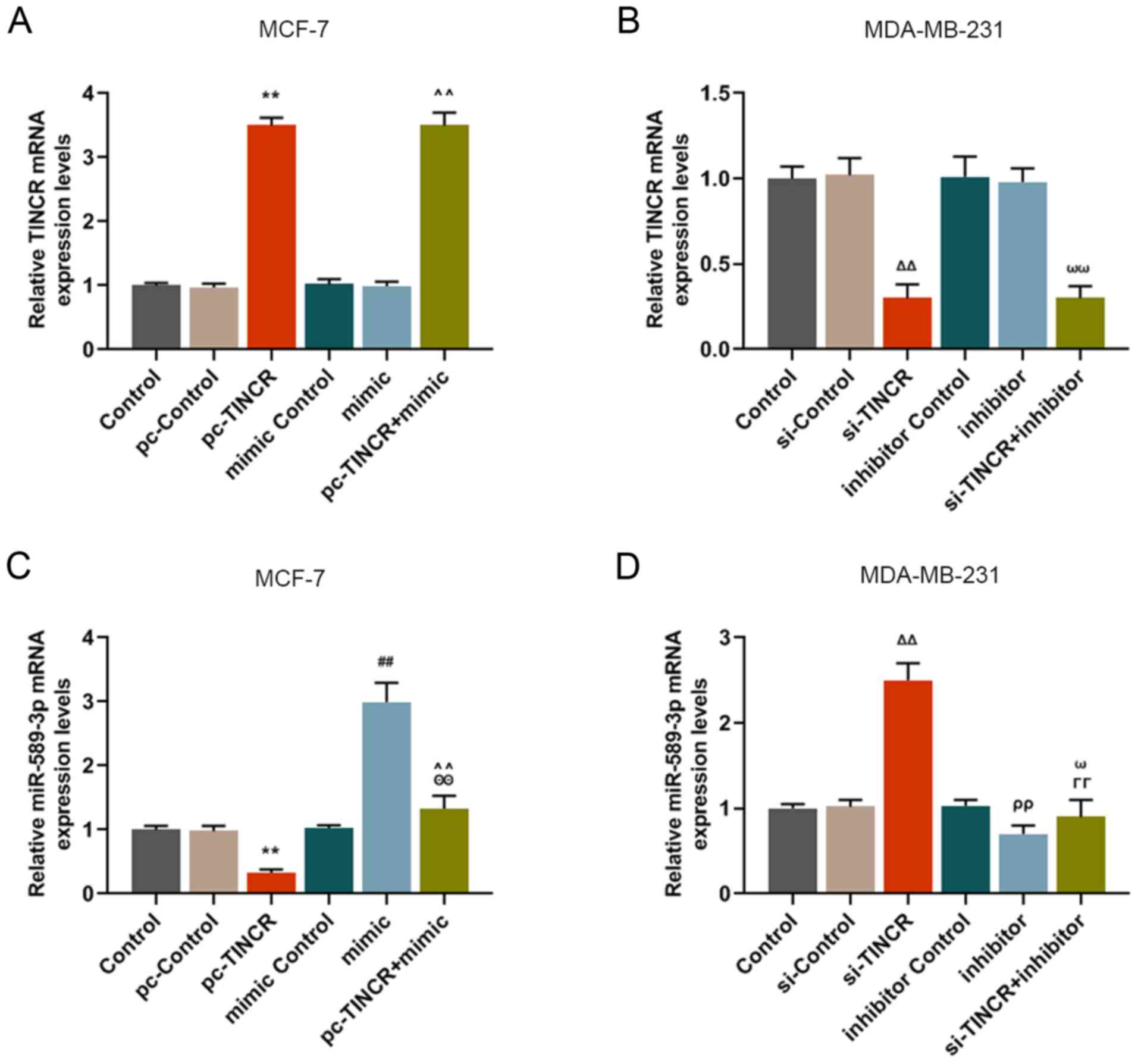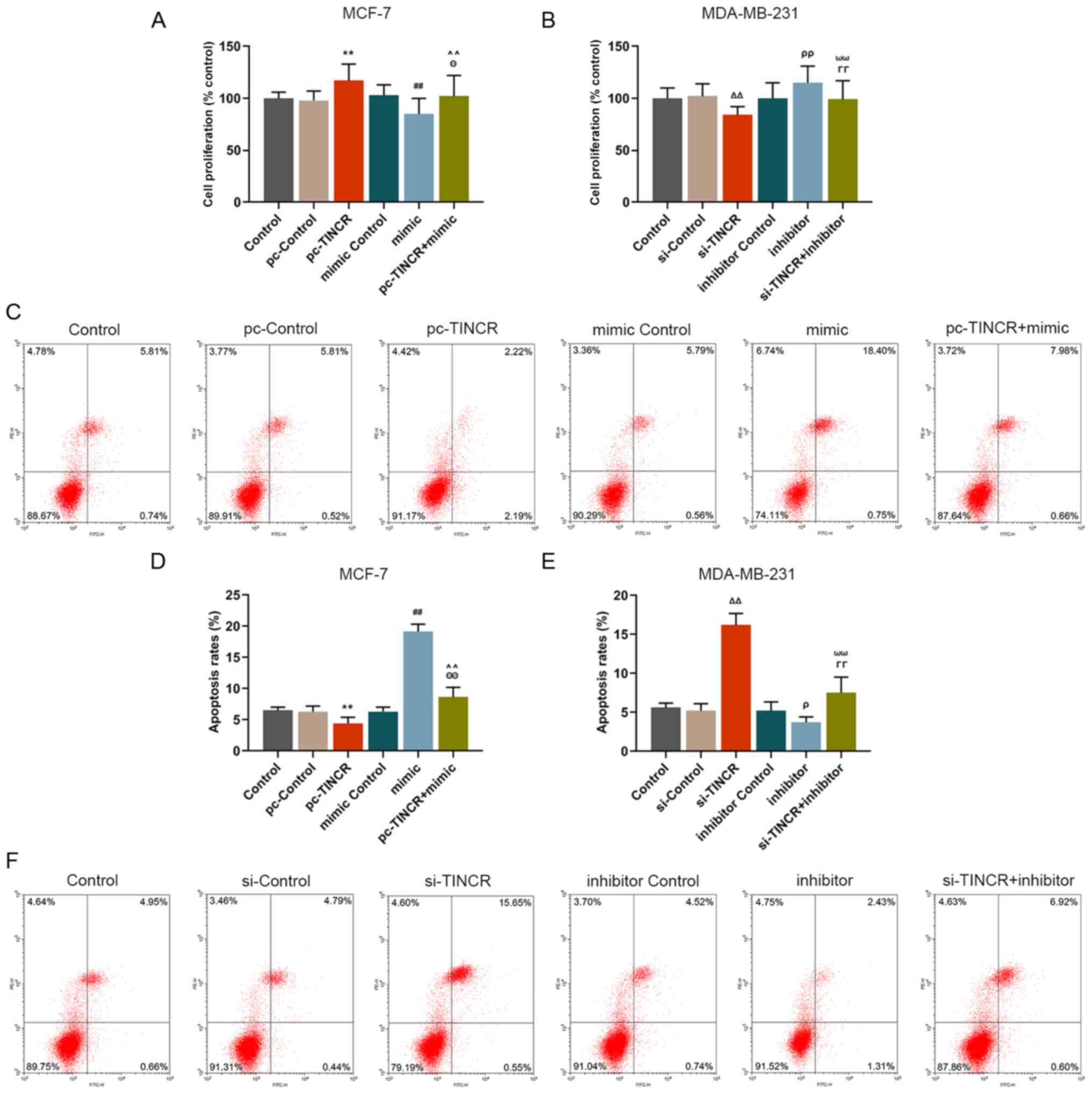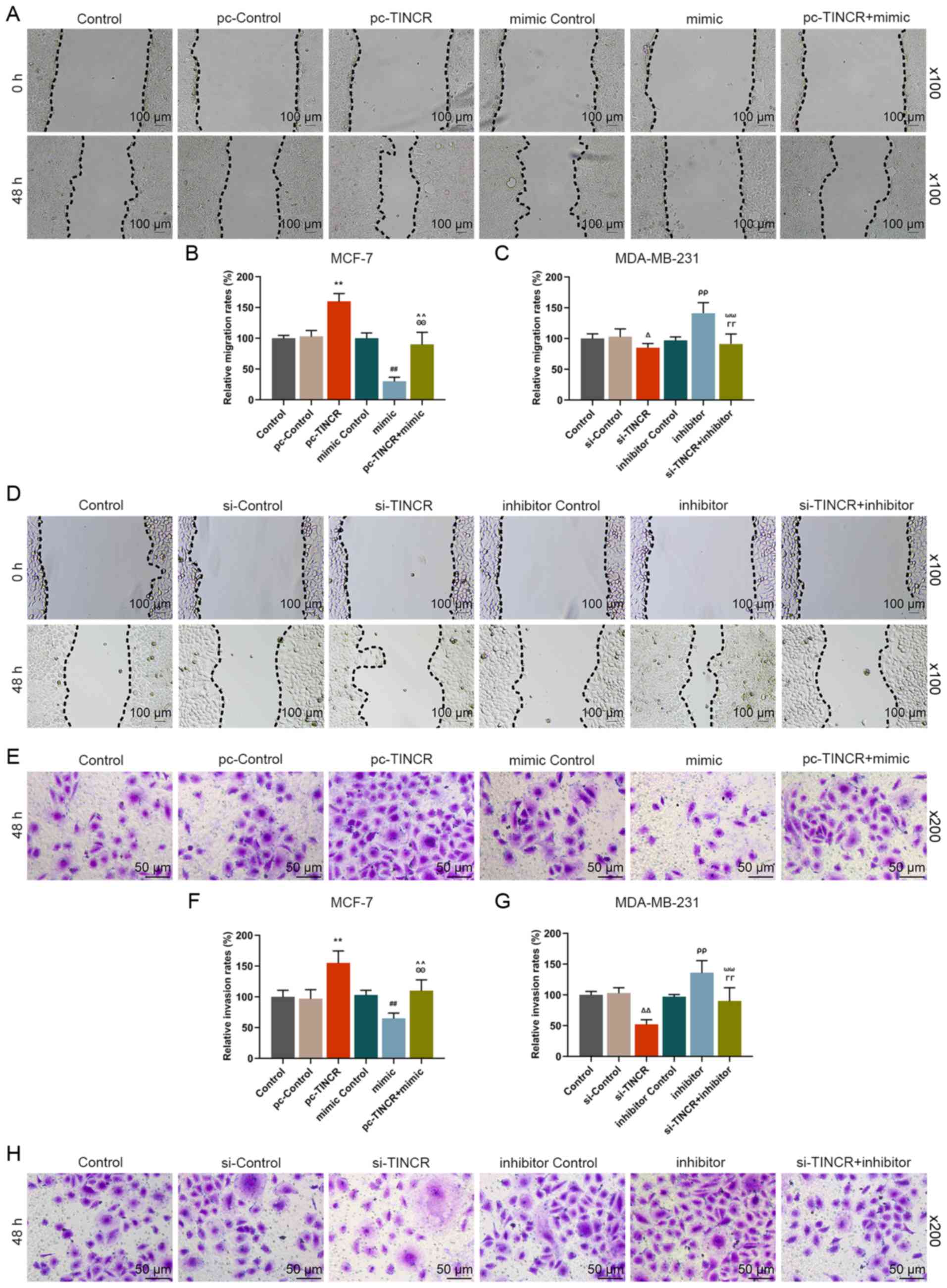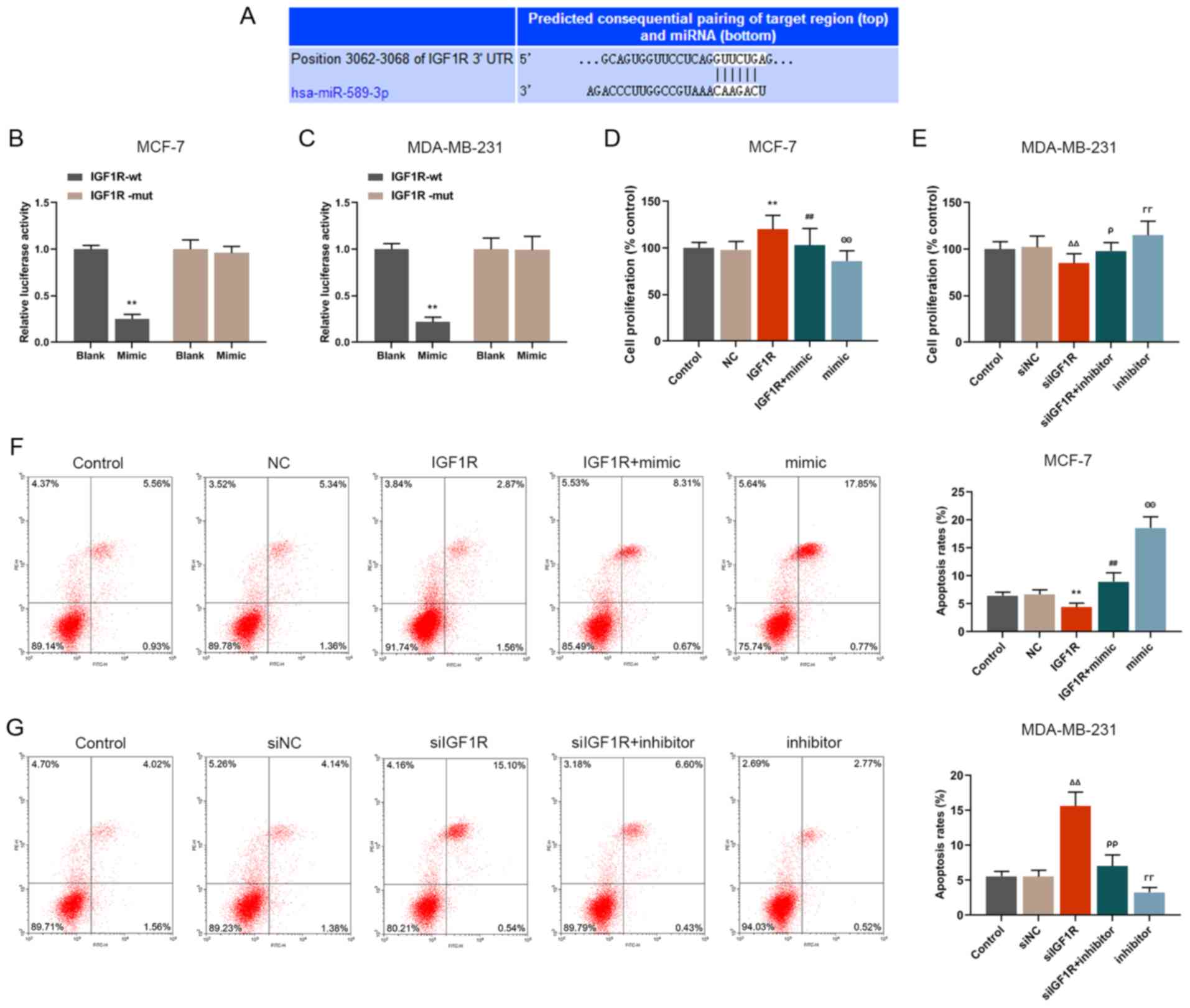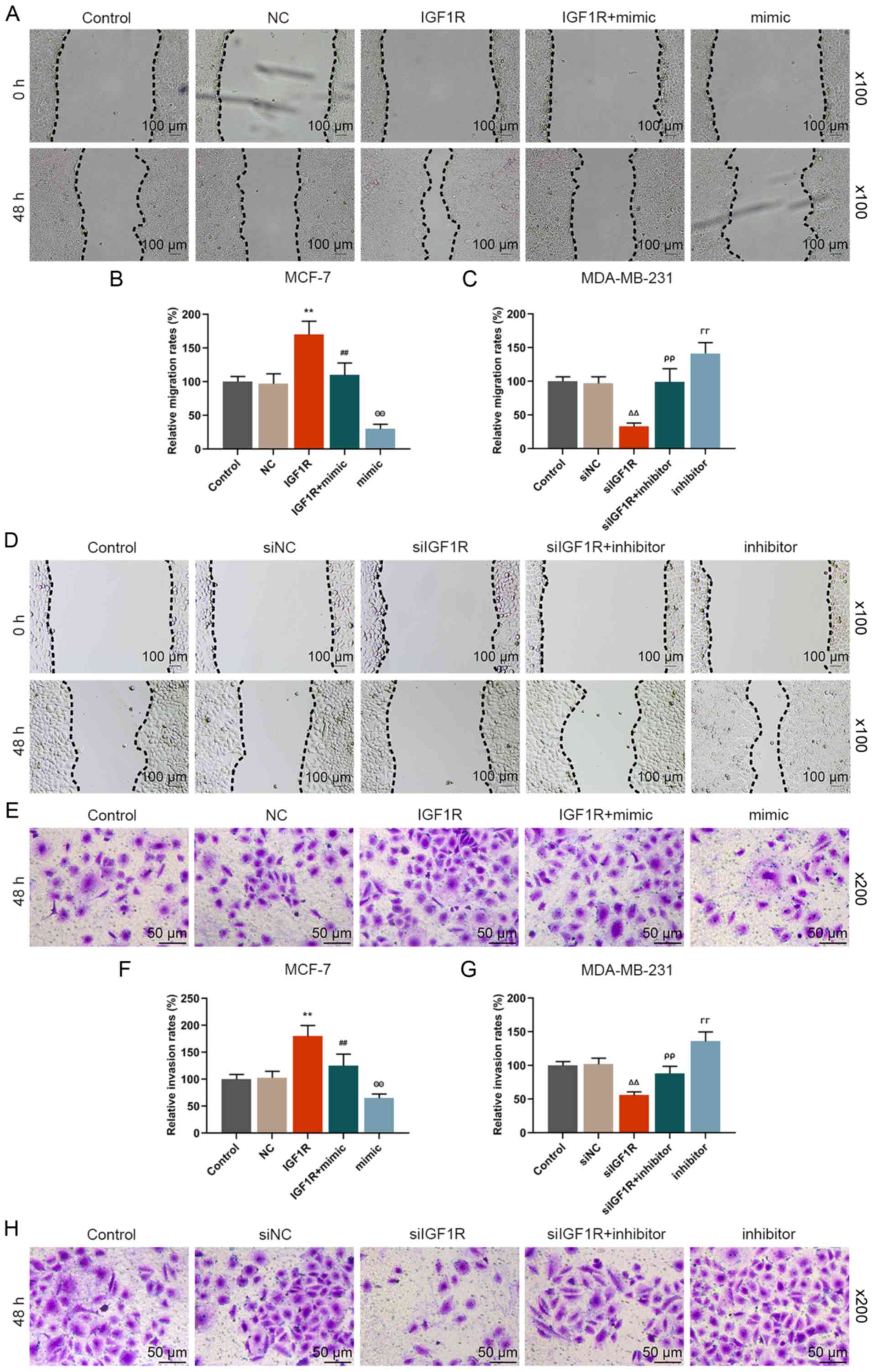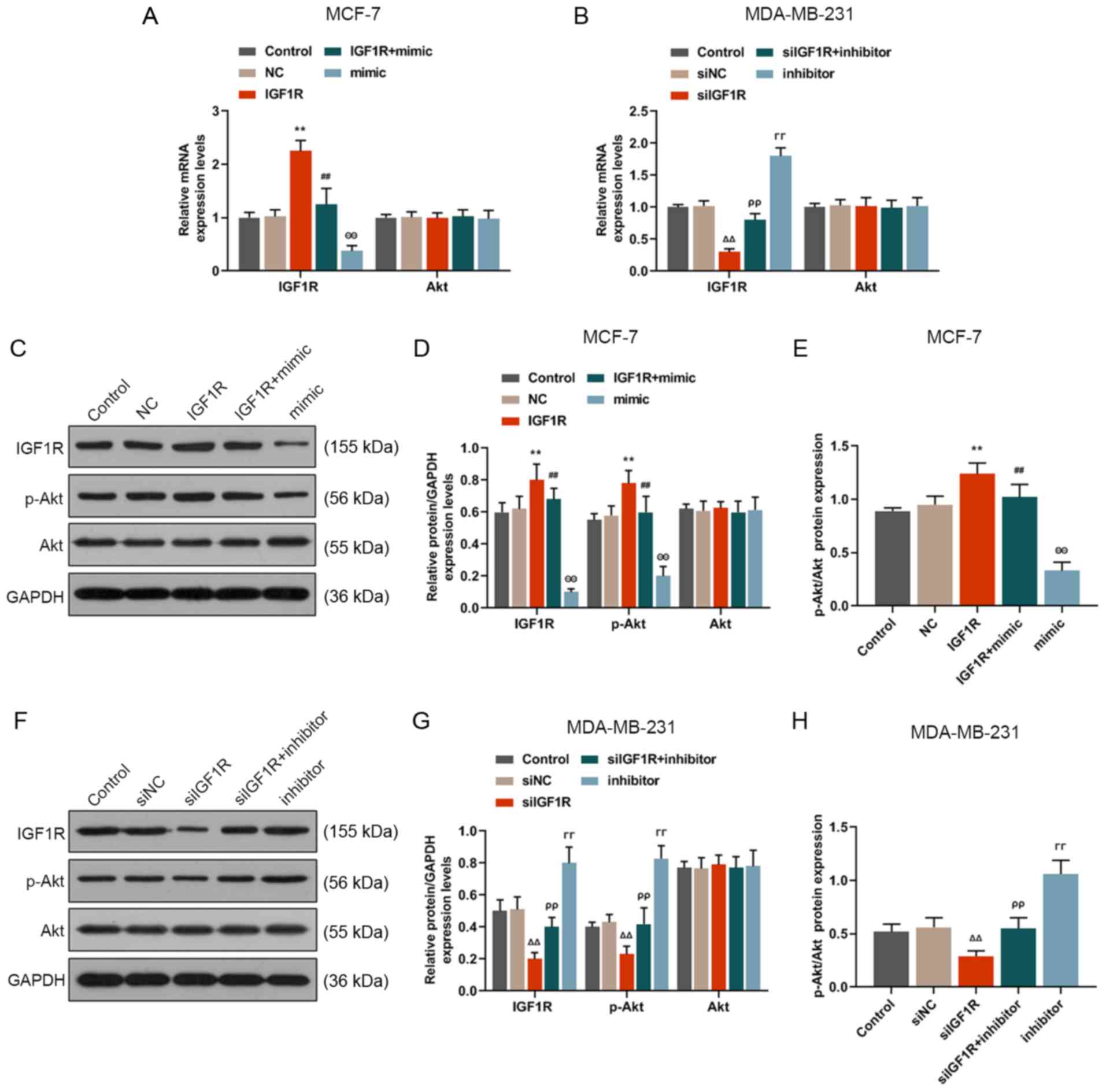|
1
|
Woolston C: Breast cancer. Nature.
527:S1012015. View
Article : Google Scholar : PubMed/NCBI
|
|
2
|
DeSantis CE, Ma J, Gaudet MM, Newman LA,
Miller KD, Goding Sauer A, Jemal A and Siegel RL: Breast cancer
statistics, 2019. CA Cancer J Clin. 69:438–451. 2019. View Article : Google Scholar : PubMed/NCBI
|
|
3
|
Ng CK, Martelotto LG, Gauthier A, Wen HC,
Piscuoglio S, Lim RS, Cowell CF, Wilkerson PM, Wai P, Rodrigues DN,
et al: Intra-tumor genetic heterogeneity and alternative driver
genetic alterations in breast cancers with heterogeneous HER2 gene
amplification. Genome Biol. 16:1072015. View Article : Google Scholar : PubMed/NCBI
|
|
4
|
Carmichael H, Matsen C, Freer P, Kohlmann
W, Stein M, Buys SS and Colonna S: Breast cancer screening of
pregnant and breastfeeding women with BRCA mutations. Breast Cancer
Res Treat. 162:225–230. 2017. View Article : Google Scholar : PubMed/NCBI
|
|
5
|
Nik-Zainal S, Davies H, Staaf J,
Ramakrishna M, Glodzik D, Zou X, Martincorena I, Alexandrov LB,
Martin S, Wedge DC, et al: Landscape of somatic mutations in 560
breast cancer whole-genome sequences. Nature. 534:47–54. 2016.
View Article : Google Scholar : PubMed/NCBI
|
|
6
|
Bray F, Ferlay J, Soerjomataram I, Siegel
RL, Torre LA and Jemal A: Global cancer statistics 2018: GLOBOCAN
estimates of incidence and mortality worldwide for 36 cancers in
185 countries. CA Cancer J Clin. 68:394–424. 2018. View Article : Google Scholar : PubMed/NCBI
|
|
7
|
Siegel RL, Miller KD and Jemal A: Cancer
statistics, 2016. CA Cancer J Clin. 66:7–30. 2016. View Article : Google Scholar : PubMed/NCBI
|
|
8
|
ENCODE Project Consortium: An integrated
encyclopedia of DNA elements in the human genome. Nature.
489:57–74. 2012. View Article : Google Scholar : PubMed/NCBI
|
|
9
|
Renganathan A and Felley-Bosco E: Long
noncoding RNAs in cancer and therapeutic potential. Adv Exp Med
Biol. 1008:199–222. 2017. View Article : Google Scholar : PubMed/NCBI
|
|
10
|
Chen Q, Zhu C, Jin Y, Si X, Jiao W, He W,
Mao W, Li M and Luo G: Plasma long non-coding RNA RP11-438N5.3 as a
novel biomarker for non-small cell lung cancer. Cancer Manag Res.
12:1513–1521. 2020. View Article : Google Scholar : PubMed/NCBI
|
|
11
|
Shen X, Xue Y, Cong H, Wang X, Fan Z, Cui
X and Ju S: Circulating lncRNA DANCR as a potential auxillary
biomarker for the diagnosis and prognostic prediction of colorectal
cancer. Biosci Rep. 40:BSR201914812020. View Article : Google Scholar : PubMed/NCBI
|
|
12
|
Zhang Y and Tang L: The application of
lncRNAs in cancer treatment and diagnosis. Recent Pat Anticancer
Drug Discov. 13:292–301. 2018. View Article : Google Scholar : PubMed/NCBI
|
|
13
|
Kretz M, Siprashvili Z, Chu C, Webster DE,
Zehnder A, Qu K, Lee CS, Flockhart RJ, Groff AF, Chow J, et al:
Control of somatic tissue differentiation by the long non-coding
RNA TINCR. Nature. 493:231–235. 2013. View Article : Google Scholar :
|
|
14
|
Kretz M: TINCR, staufen1, and cellular
differentiation. RNA Biol. 10:1597–1601. 2013. View Article : Google Scholar : PubMed/NCBI
|
|
15
|
Xu TP, Wang YF, Xiong WL, Ma P, Wang WY,
Chen WM, Huang MD, Xia R, Wang R, Zhang EB, et al: E2F1 induces
TINCR transcriptional activity and accelerates gastric cancer
progression via activation of TINCR/STAU1/CDKN2B signaling axis.
Cell Death Dis. 8:e28372017. View Article : Google Scholar : PubMed/NCBI
|
|
16
|
Zhang ZY, Lu YX, Zhang ZY, Chang YY, Zheng
L, Yuan L, Zhang F, Hu YH, Zhang WJ and Li XN: Loss of TINCR
expression promotes proliferation, metastasis through activating
EpCAM cleavage in colorectal cancer. Oncotarget. 7:22639–22649.
2016. View Article : Google Scholar : PubMed/NCBI
|
|
17
|
Chen Z, Liu Y, He A, Li J, Chen M, Zhan Y,
Lin J, Zhuang C, Liu L, Zhao G, et al: Theophylline controllable
RNAi-based genetic switches regulate expression of lncRNA TINCR and
malignant phenotypes in bladder cancer cells. Sci Rep. 6:307982016.
View Article : Google Scholar : PubMed/NCBI
|
|
18
|
Hu M, Han Y, Zhang Y, Zhou Y and Ye L:
lncRNA TINCR sponges miR-214-5p to upregulate ROCK1 in
hepatocellular carcinoma. BMC Med Genet. 21:22020. View Article : Google Scholar : PubMed/NCBI
|
|
19
|
Gao YW, Ma F, Xie YC, Ding MG, Luo LH,
Jiang S, Rao L and Liu XL: Sp1-induced upregulation of the long
noncoding RNA TINCR inhibits cell migration and invasion by
regulating miR-107/miR-1286 in lung adenocarcinoma. Am J Transl
Res. 11:4761–4775. 2019.PubMed/NCBI
|
|
20
|
Li R, Wang Y, Xu Y, He X and Li Y:
Silencing the long noncoding RNA, TINCR, a molecular sponge of
miR-335, inhibits the malignant phenotype of epithelial ovarian
cancer via FGF2 suppression. Int J Oncol. 55:1110–1124.
2019.PubMed/NCBI
|
|
21
|
Li S, Li J, Li H, Gao M, Li N, Wang Y,
Tong L, Song M and Yin Z: Clinicopathological and prognostic
significance of TINCR in caner: A meta-analysis. Pathol Res Pract.
215:1525962019. View Article : Google Scholar : PubMed/NCBI
|
|
22
|
Dong H, Hu J, Zou K, Ye M, Chen Y, Wu C,
Chen X and Han M: Activation of LncRNA TINCR by H3K27 acetylation
promotes Trastuzumab resistance and epithelial-mesenchymal
transition by targeting MicroRNA-125b in breast cancer. Mol Cancer.
18:32019. View Article : Google Scholar : PubMed/NCBI
|
|
23
|
Liu Y, Du Y, Hu X, Zhao L and Xia W:
Up-regulation of ceRNA TINCR by SP1 contributes to tumorigenesis in
breast cancer. BMC Cancer. 18:3672018. View Article : Google Scholar : PubMed/NCBI
|
|
24
|
Li J, Gao C, Liu C, Zhou C, Ma X, Li H, Li
J, Wang X, Qi L, Yao Y, et al: Four lncRNAs associated with breast
cancer prognosis identified by coexpression network analysis. J
Cell Physiol. 234:14019–14030. 2019. View Article : Google Scholar : PubMed/NCBI
|
|
25
|
Xu S, Kong D, Chen Q, Ping Y and Pang D:
Oncogenic long noncoding RNA landscape in breast cancer. Mol
Cancer. 16:1292017. View Article : Google Scholar : PubMed/NCBI
|
|
26
|
Mah SM, Buske C, Humphries RK and
Kuchenbauer F: miRNA*: A passenger stranded in RNA-induced
silencing complex? Crit Rev Eukaryot Gene Expr. 20:141–148. 2010.
View Article : Google Scholar
|
|
27
|
Backes C, Meese E and Keller A: Specific
miRNA disease biomarkers in blood, serum and plasma: Challenges and
prospects. Mol Diagn Ther. 20:509–518. 2016. View Article : Google Scholar : PubMed/NCBI
|
|
28
|
Chen Z, Liu H, Yang H, Gao Y, Zhang G and
Hu J: The long noncoding RNA, TINCR, functions as a competing
endogenous RNA to regulate PDK1 expression by sponging miR-375 in
gastric cancer. Onco Targets Ther. 10:3353–3362. 2017. View Article : Google Scholar : PubMed/NCBI
|
|
29
|
Livak KJ and Schmittgen TD: Analysis of
relative gene expression data using real-time quantitative PCR and
the 2(-Delta Delta C(T)) method. Methods. 25:402–408. 2001.
View Article : Google Scholar
|
|
30
|
Wiechmann L, Sampson M, Stempel M, Jacks
LM, Patil SM, King T and Morrow M: Presenting features of breast
cancer differ by molecular subtype. Ann Surg Oncol. 16:2705–2710.
2009. View Article : Google Scholar : PubMed/NCBI
|
|
31
|
Nagini S: Breast cancer: Current molecular
therapeutic targets and new players. Anticancer Agents Med Chem.
17:152–163. 2017. View Article : Google Scholar
|
|
32
|
Kast K, Schoffer O, Link T, Forberger A,
Petzold A, Niedostatek A, Werner C, Klug SJ, Werner A, Gatzweiler
A, et al: Trastuzumab and survival of patients with metastatic
breast cancer. Arch Gynecol Obstet. 296:303–312. 2017. View Article : Google Scholar : PubMed/NCBI
|
|
33
|
Saw PE, Park J, Jon S and Farokhzad OC: A
drug-delivery strategy for overcoming drug resistance in breast
cancer through targeting of oncofetal fibronectin. Nanomedicine.
13:713–722. 2017. View Article : Google Scholar
|
|
34
|
DeMichele A, Yee D and Esserman L:
Mechanisms of resistance to neoadjuvant chemotherapy in breast
cancer. N Engl J Med. 377:2287–2289. 2017. View Article : Google Scholar : PubMed/NCBI
|
|
35
|
Qadir MI and Faheem A: miRNA: A diagnostic
and therapeutic tool for pancreatic cancer. Crit Rev Eukaryot Gene
Expr. 27:197–204. 2017. View Article : Google Scholar : PubMed/NCBI
|
|
36
|
Ganapathy K, Staklinski S, Hasan MF,
Ottman R, Andl T, Berglund AE, Park JY and Chakrabarti R:
Multifaceted function of MicroRNA-299-3p fosters an antitumor
environment through modulation of androgen receptor and VEGFA
signaling pathways in prostate cancer. Sci Rep. 10:51672020.
View Article : Google Scholar : PubMed/NCBI
|
|
37
|
Indrieri A, Carrella S, Carotenuto P,
Banfi S and Franco B: The pervasive role of the miR-181 Family in
development, neurode-generation, and cancer. Int J Mol Sci.
21:E20922020. View Article : Google Scholar
|
|
38
|
Pu X, Ding G, Wu M, Zhou S, Jia S and Cao
L: Elevated expression of exosomal microRNA-21 as a potential
biomarker for the early diagnosis of pancreatic cancer using a
tethered cationic lipoplex nanoparticle biochip. Oncol Lett.
19:2062–2070. 2020.PubMed/NCBI
|
|
39
|
Lan F, Yue X and Xia T: Exosomal
microRNA-210 is a potentially non-invasive biomarker for the
diagnosis and prognosis of glioma. Oncol Lett. 19:1967–1974.
2020.PubMed/NCBI
|
|
40
|
Nassar FJ, Nasr R and Talhouk R: MicroRNAs
as biomarkers for early breast cancer diagnosis, prognosis and
therapy prediction. Pharmacol Ther. 172:34–49. 2017. View Article : Google Scholar
|
|
41
|
Zou C, Xu Q, Mao F, Li D, Bian C, Liu LZ,
Jiang Y, Chen X, Qi Y, Zhang X, et al: MiR-145 inhibits tumor
angiogenesis and growth by N-RAS and VEGF. Cell Cycle.
11:2137–2145. 2012. View Article : Google Scholar : PubMed/NCBI
|
|
42
|
Zhang Z, Zhang B, Li W, Fu L, Fu L, Zhu Z
and Dong JT: Epigenetic silencing of miR-203 upregulates SNAI2 and
contributes to the invasiveness of malignant breast cancer cells.
Genes Cancer. 2:782–791. 2011. View Article : Google Scholar
|
|
43
|
Tang Y, Zhou X, Ji J, Chen L, Cao J, Luo J
and Zhang S: High expression levels of miR-21 and miR-210 predict
unfavorable survival in breast cancer: A systemic review and
meta-analysis. Int J Biol Markers. 30:e347–e358. 2015. View Article : Google Scholar : PubMed/NCBI
|
|
44
|
Cesarini V, Silvestris DA, Tassinari V,
Tomaselli S, Alon S, Eisenberg E, Locatelli F and Gallo A:
ADAR2/miR-589-3p axis controls glioblastoma cell
migration/invasion. Nucleic Acids Res. 46:2045–2059. 2018.
View Article : Google Scholar :
|
|
45
|
Duan C, Ren H and Gao S: Insulin-like
growth factors (IGFs), IGF receptors, and IGF-binding proteins:
Roles in skeletal muscle growth and differentiation. Gen Comp
Endocrinol. 167:344–351. 2010. View Article : Google Scholar : PubMed/NCBI
|
|
46
|
Patil AS, Sable RB and Kothari RM: Role of
insulin-like growth factors (IGFs), their receptors and genetic
regulation in the chondrogenesis and growth of the mandibular
condylar cartilage. J Cell Physiol. 227:1796–1804. 2012. View Article : Google Scholar
|
|
47
|
Simpson A, Petnga W, Macaulay VM,
Weyer-Czernilofsky U and Bogenrieder T: Insulin-like growth factor
(IGF) pathway targeting in cancer: Role of the IGF Axis and
opportunities for future combination studies. Target Oncol.
12:571–597. 2017. View Article : Google Scholar : PubMed/NCBI
|
|
48
|
Loughran G, Huigsloot M, Kiely PA, Smith
LM, Floyd S, Ayllon V and O'Connor R: Gene expression profiles in
cells transformed by overexpression of the IGF-I receptor.
Oncogene. 24:6185–6193. 2005. View Article : Google Scholar : PubMed/NCBI
|
|
49
|
Werner H and Sarfstein R: Transcriptional
and epigenetic control of IGF1R gene expression: Implications in
metabolism and cancer. Growth Horm IGF Res. 24:112–118. 2014.
View Article : Google Scholar : PubMed/NCBI
|
|
50
|
De Leon DD, Wilson DM, Powers M and
Rosenfeld RG: Effects of insulin-like growth factors (IGFs) and IGF
receptor antibodies on the proliferation of human breast cancer
cells. Growth Factors. 6:327–336. 1992. View Article : Google Scholar : PubMed/NCBI
|
|
51
|
Turner BC, Haffty BG, Narayanan L, Yuan J,
Havre PA, Gumbs AA, Kaplan L, Burgaud JL, Carter D, Baserga R and
Glazer PM: Insulin-like growth factor-I receptor overexpression
mediates cellular radioresistance and local breast cancer
recurrence after lumpectomy and radiation. Cancer Res.
57:3079–3083. 1997.PubMed/NCBI
|
|
52
|
Powell MJ, Dufault SM, Henry JE, Allison
AC, Cora R and Benz CC: Pregnancy hypertension and a commonly
inherited IGF1R variant (rs2016347) reduce breast cancer risk by
enhancing mammary gland involution. J Oncol. 2019:60184322019.
View Article : Google Scholar : PubMed/NCBI
|
|
53
|
Wu H, Sun T and Bi R: Inhibition of
insulin-like growth factor 1 signaling synergistically enhances the
tumor suppressive role of triptolide in triple-negative breast
cancer cells. Oncol Lett. 18:822–829. 2019.PubMed/NCBI
|
|
54
|
Riedemann J and Macaulay VM: IGF1R
signalling and its inhibition. Endocr Relat Cancer. 13(Suppl 1):
S33–S43. 2006. View Article : Google Scholar
|
|
55
|
Jonassen AK, Sack MN, Mjos OD and Yellon
DM: Myocardial protection by insulin at reperfusion requires early
administration and is mediated via Akt and p70s6 kinase
cell-survival signaling. Circ Res. 89:1191–1198. 2001. View Article : Google Scholar : PubMed/NCBI
|
|
56
|
Nitulescu GM, Van De Venter M, Nitulescu
G, Ungurianu A, Juzenas P, Peng Q, Olaru OT, Grădinaru D, Tsatsakis
A, Tsoukalas D, et al: The Akt pathway in oncology therapy and
beyond (Review). Int J Oncol. 53:2319–2331. 2018.PubMed/NCBI
|
|
57
|
Mundi PS, Sachdev J, McCourt C and
Kalinsky K: AKT in cancer: New molecular insights and advances in
drug development. Br J Clin Pharmacol. 82:943–956. 2016. View Article : Google Scholar : PubMed/NCBI
|
|
58
|
Hartog H, Van Der Graaf WT, Boezen HM and
Wesseling J: Treatment of breast cancer cells by IGF1R tyrosine
kinase inhibitor combined with conventional systemic drugs.
Anticancer Res. 32:1309–1318. 2012.PubMed/NCBI
|
|
59
|
de Lint K, Poell JB, Soueidan H,
Jastrzebski K, Vidal Rodriguez J, Lieftink C, Wessels LF and
Beijersbergen RL: Sensitizing triple-negative breast cancer to PI3K
inhibition by cotargeting IGF1R. Mol Cancer Ther. 15:1545–1556.
2016. View Article : Google Scholar : PubMed/NCBI
|
|
60
|
Chen X, Cui D, Bi Y, Shu J, Xiong X and
Zhao Y: AKT inhibitor MK-2206 sensitizes breast cancer cells to
MLN4924, a first-in-class NEDD8-activating enzyme (NAE) inhibitor.
Cell Cycle. 17:2069–2079. 2018. View Article : Google Scholar : PubMed/NCBI
|















